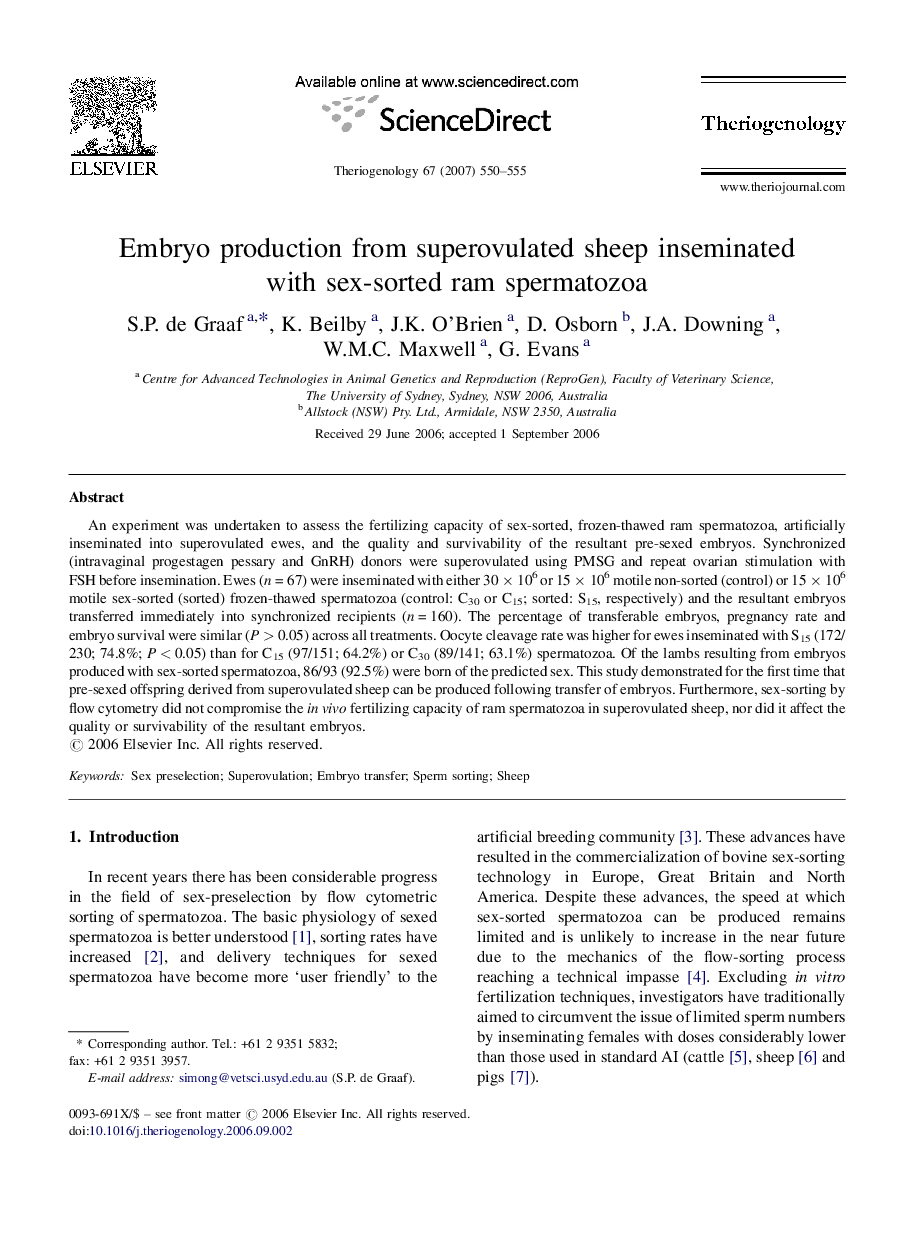| Article ID | Journal | Published Year | Pages | File Type |
|---|---|---|---|---|
| 2096519 | Theriogenology | 2007 | 6 Pages |
An experiment was undertaken to assess the fertilizing capacity of sex-sorted, frozen-thawed ram spermatozoa, artificially inseminated into superovulated ewes, and the quality and survivability of the resultant pre-sexed embryos. Synchronized (intravaginal progestagen pessary and GnRH) donors were superovulated using PMSG and repeat ovarian stimulation with FSH before insemination. Ewes (n = 67) were inseminated with either 30 × 106 or 15 × 106 motile non-sorted (control) or 15 × 106 motile sex-sorted (sorted) frozen-thawed spermatozoa (control: C30 or C15; sorted: S15, respectively) and the resultant embryos transferred immediately into synchronized recipients (n = 160). The percentage of transferable embryos, pregnancy rate and embryo survival were similar (P > 0.05) across all treatments. Oocyte cleavage rate was higher for ewes inseminated with S15 (172/230; 74.8%; P < 0.05) than for C15 (97/151; 64.2%) or C30 (89/141; 63.1%) spermatozoa. Of the lambs resulting from embryos produced with sex-sorted spermatozoa, 86/93 (92.5%) were born of the predicted sex. This study demonstrated for the first time that pre-sexed offspring derived from superovulated sheep can be produced following transfer of embryos. Furthermore, sex-sorting by flow cytometry did not compromise the in vivo fertilizing capacity of ram spermatozoa in superovulated sheep, nor did it affect the quality or survivability of the resultant embryos.
